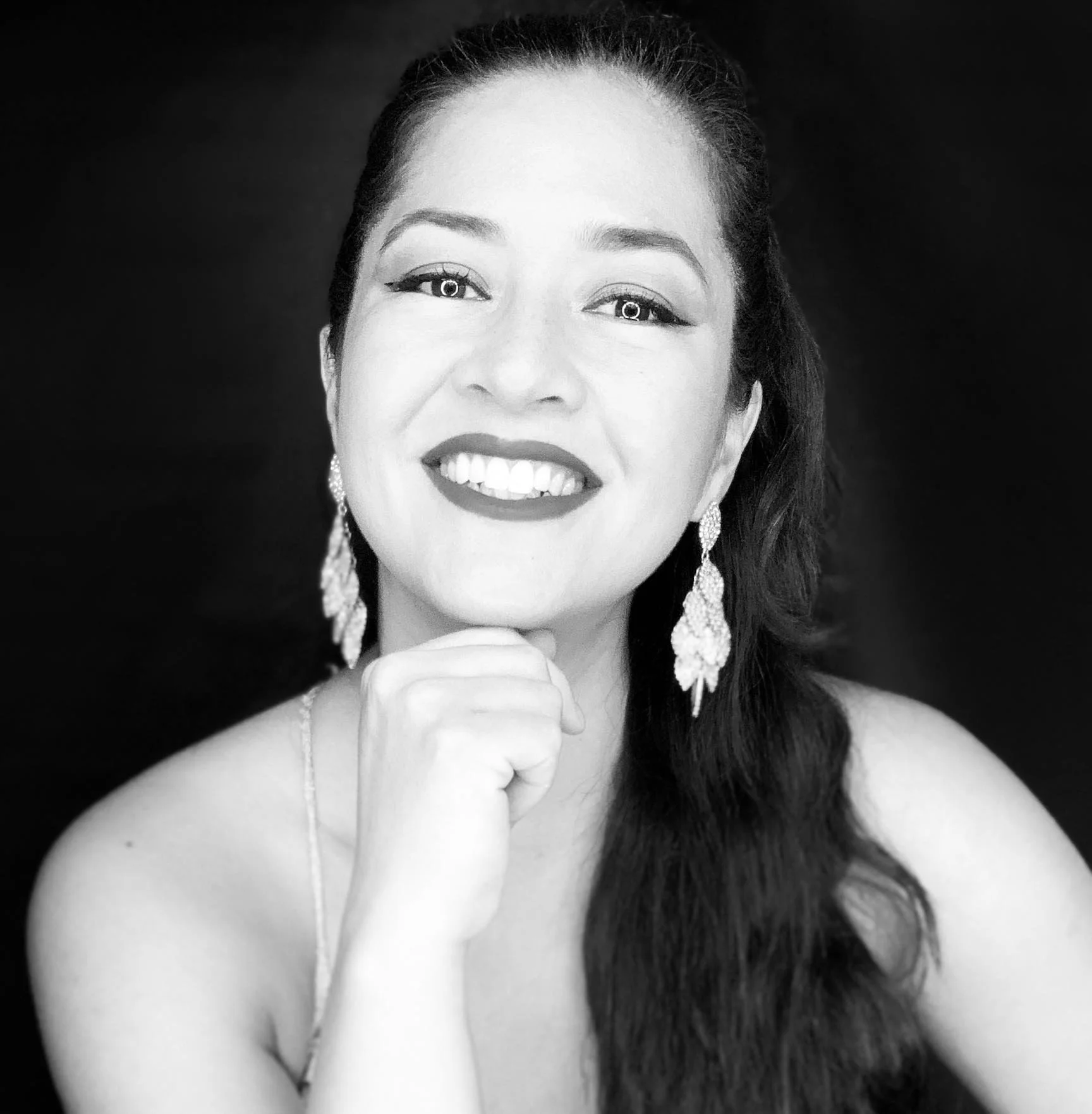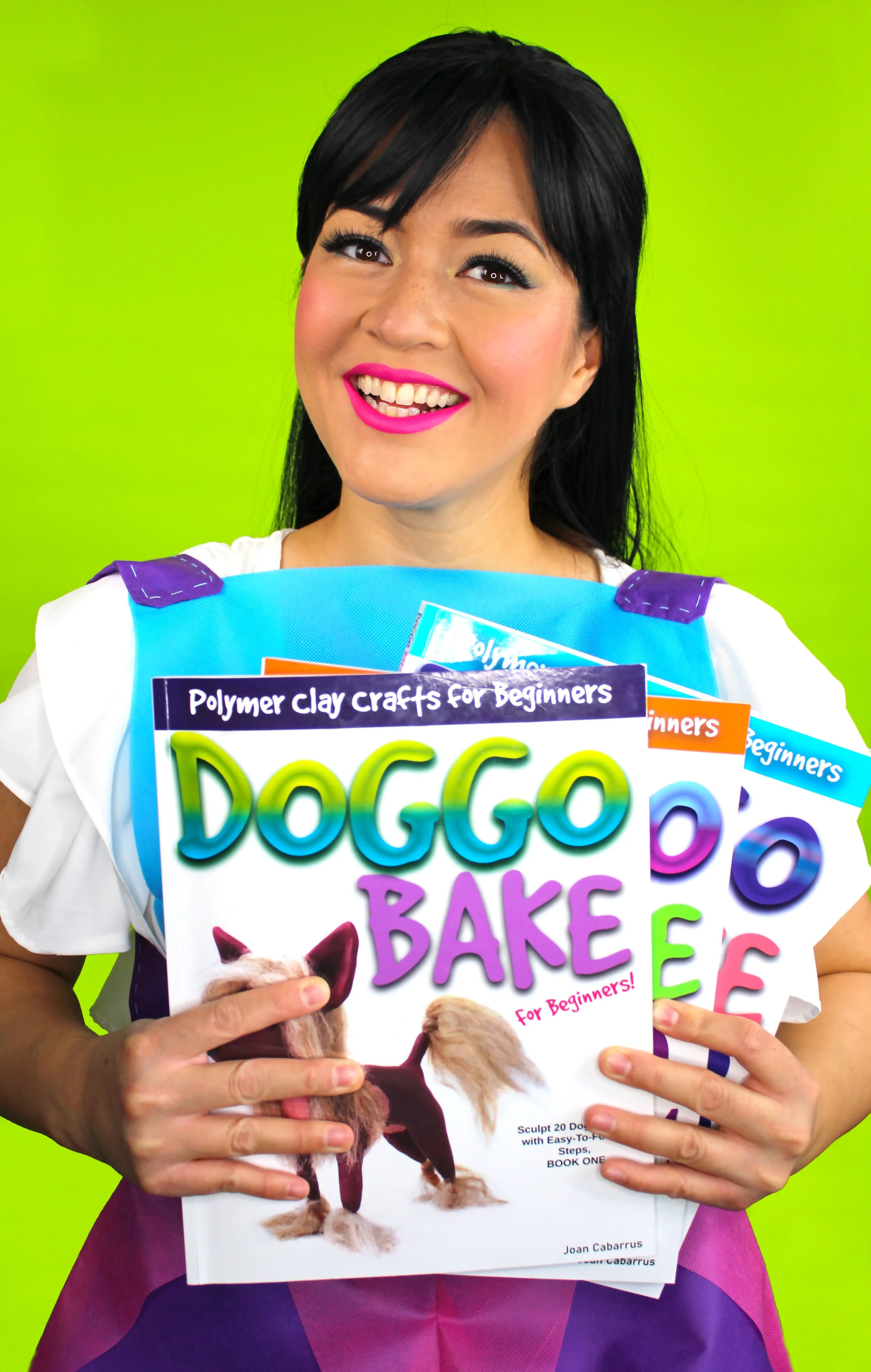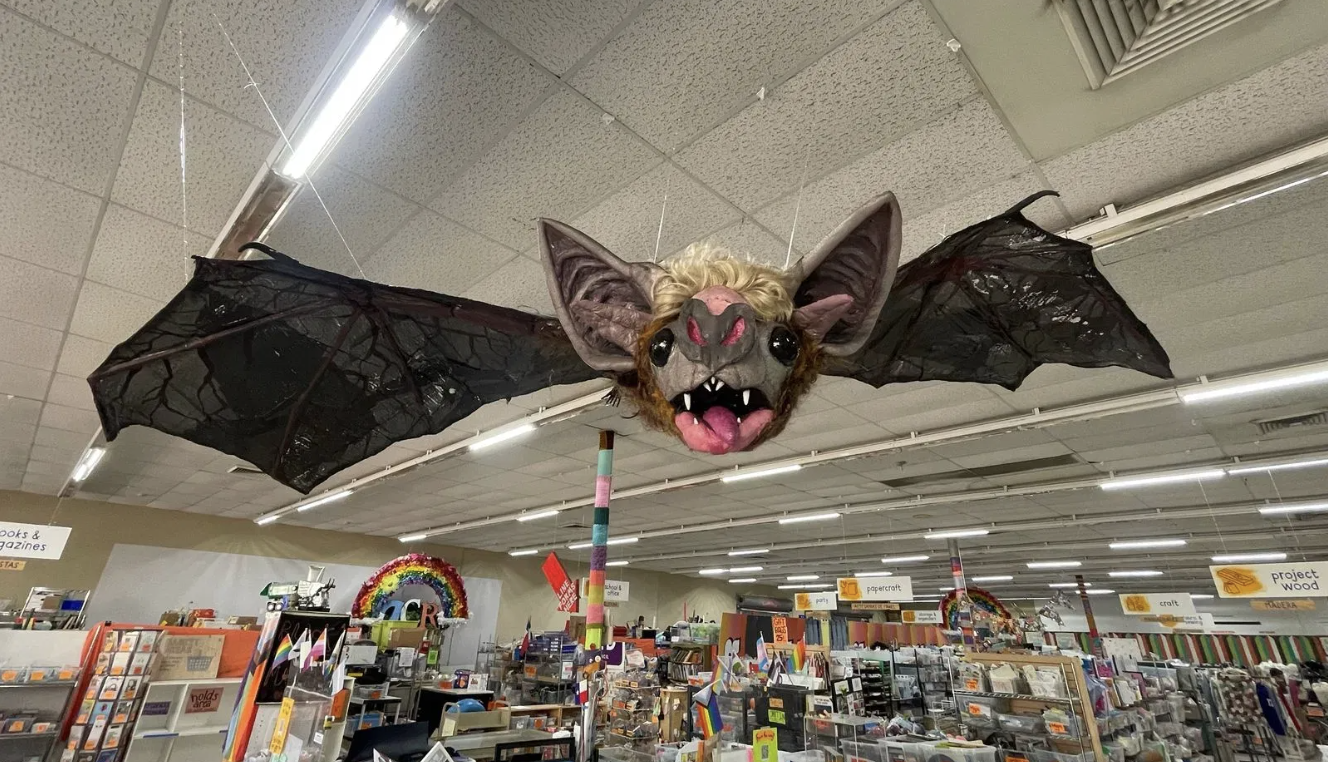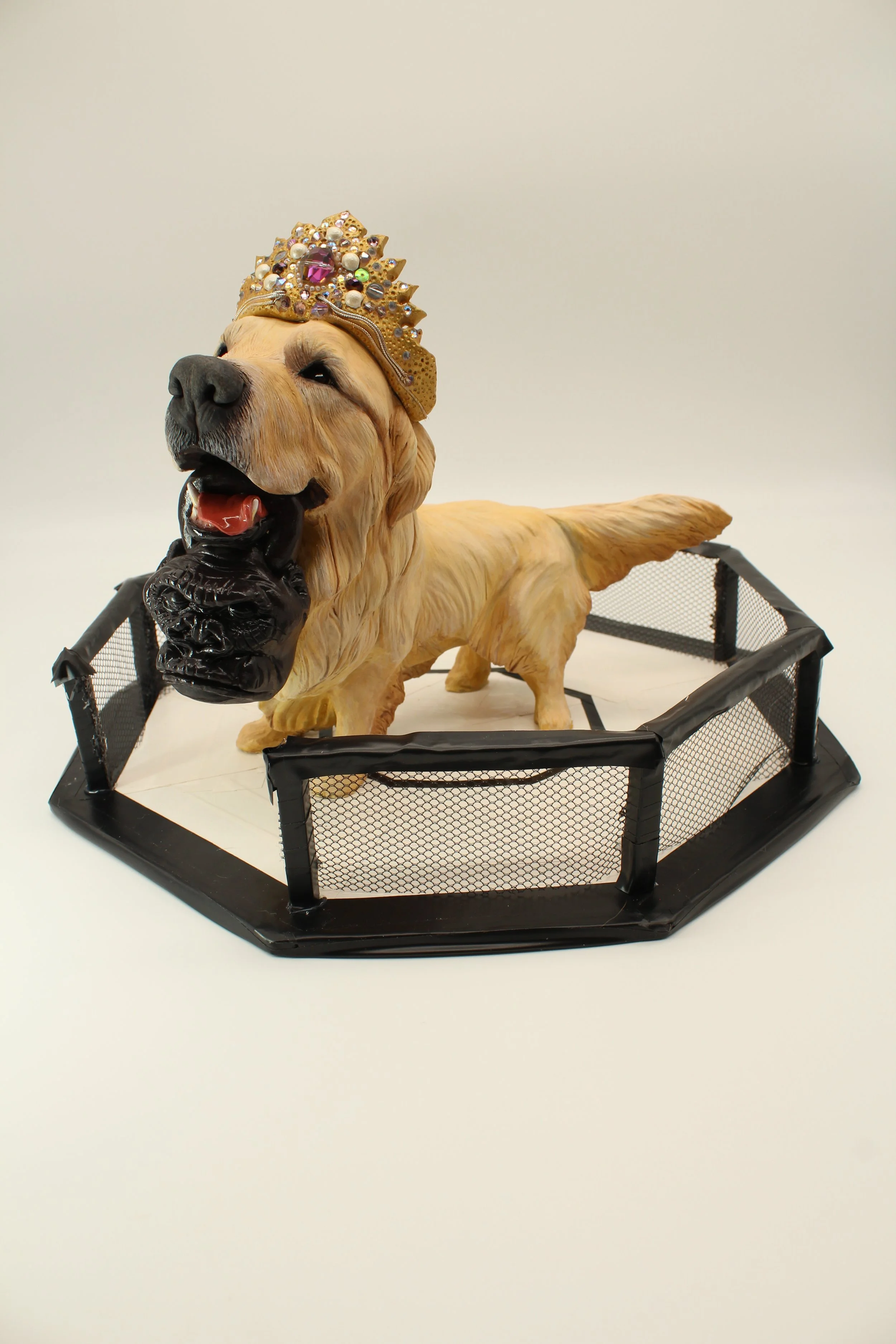Artist Spotlight: Joan Cabarrus
Have you looked up in our center lately and gazed upon Austin’s first creative reuse bat taking flight? Learn about the mastermind behind this project, artist Joan Cabarrus! This interview delves into Joan's creative process, where problem-solving and resourcefulness reign supreme. From upcycled aluminum cans to repurposed plastic CD cases, Joan breathes new life into everyday items, often incorporating them into her stunning custom pet sculptures.
When did you start working as a sculptural artist?
I first learned how to sculpt with polymer clay back in early 2018. One day during my day off from my nursing job, I was bored at home and got curious about this “thing” my ex-husband owned that was collecting dust in our house. It was a block of polymer clay. I learned how to use it later and sculpted my first polymer clay sculpture, a fish. Later, I sculpted a small head bust of our dog, Charlie. This made me realize that I have a talent for immortalizing or recreating someone’s dog’s essence in the form of a sculpture. I thought this craft would help many people, specifically those who are grieving from the loss of their pets.
I took sculpting a little bit more seriously in August 2018 and finally created a legitimate business with it.
Which aspect of creating is your favorite?
Problem-solving and critical thinking are my favorite parts of creating my artwork. It’s thinking outside the box. If my artworks do not involve these, I get bored. I also use art making to cultivate resourcefulness. You will see my work generally has some sort of recycled materials incorporated in it. For example, with my custom handmade dog sculptures with an urn inside, the urns are made out of recycled aluminum soda cans. The eyes of the sculptures are made of recycled plastic beads from an old necklace.
I found out that recycling, reusing, or upcycling any objects that aren't intended for art making is the heart of my deep love for creating my art. This involves detaching myself from my limiting beliefs on any labels and names of an object. For example, a paperclip. If we think this item’s purpose is solely to secure papers together, that limits its use. But if we think of this paperclip as a wire, our minds can easily detach from the purpose of the paperclip and we can easily manipulate it into something else. It’s all about perspective.
Where do you get your inspiration?
I usually start from within and then go outside, if that makes any sense. The large bat sculpture at ACR that we created out of recycled plastics is one. I had no idea how to recycle plastic by melting or even ironing it; I only knew how to upcycle plastic by cutting, trimming, gluing, and taping. So when I want to create something, I plan it in my mind then I go out to research the information about the materials itself.
With plastics, I found very knowledgeable people online and learned what plastics are made out of. I learned how to use tools and safe ways to manipulate plastics. I am not a scientist or an engineer, so I find this information worth researching to help create my art.
Image of Mrs. Batreuse, the creative reuse bat, made in partnership with ACR, Bat Conservation International, and Austin Youth River Watch. Concept, design, and workshop led by Joan. Photo Credit: CBS Austin
What is your preferred way to engage with your audience?
I have so many ways I want to engage with my audience but because I am doing this all by myself, I can only do this one at a time. I love to teach and empower people to be resourceful and courageous through sculpting. I see so many values in sculpting, particularly polymer clay, that can be applied in real life. It’s a great way to help people who are going through disabilities, and teaching workshops in the local community is one great way to do this. I thank Austin Creative Reuse for being such a huge support and resource for my mission.
I also published and continue to publish more sculpting book tutorials so that people globally can benefit from my talents. Now that I have experienced creating public art that could potentially attract many people, I want to create a lot of artwork for places like animal shelters, animal-related businesses, art centers, and any places that advocate for sustainability and resourcefulness. I have an affinity for animals, people’s pets, dogs and cats, and plastics (polymer clay is plastic by the way). I could imagine creating beautiful works of animal sculptures being displayed inside or outside, on ceilings, or the ground of business or organization buildings.
Someday, I hope to meet other creatives in Austin with whom I could collaborate, especially those who are into metals, woods, or other mediums and we could create even more massive artworks. Junk yards would then be another playground.
How does reuse play a part in your creativity?
First is resourcefulness. Something shouldn’t be expensive just because the materials or even the educational teaching space are expensive. If I could lower the price of my art supplies by reusing stuff or finding the best deals and still achieve the same results, then I could offer my classes even more affordably to people regardless of their income status.
The second is thinking outside the box. It’s so satisfying to see an idea come to fruition that is created out of nothing or scraps. As I become more mature as a person, I am starting to learn that this is a good way to encourage people to reuse or recycle in order to help the collective and the environment.
Third is because it’s just so cool and it’s not a common craft. I am here as an artist to cultivate and hopefully change people’s perspectives about reusing and recycling their items or if they have to get rid of stuff then take them to Austin Creative Reuse or Goodwill.
What compels you to donate to ACR?
I love ACR’s mission to educate and cultivate resourcefulness. One thing that I found out about them is that they are big into diversity. People here are humble and helpful. They are also very transparent with collaborations and dealings which I find trustworthy. The fact that they even have workshop scholarships for people who cannot afford to attend their art workshops is so helpful for the community. They care about everyone. If I were wealthy, I would 100% support this organization.
Do you have a favorite ACR find? How did you use it?
CD Cases! I just learned how to manipulate this item by melting it with acetone. It’s a great substitute for commercial glue which is good for making artwork. It is also the same type of plastic for styrofoams which are non-biodegradable. Reusing or recycling them helps that environment for sure.
Where can we find out more about your work and what you do?
Artist website: www.JFCRN.com
E-commerce website: www.DoggoBake.com.
Facebook : Handmade Pet Sculptures - Joan Cabarrus
Youtube: The Singing Sculptor - Joan Cabarrus (for tutorials and entertainment)
Instagram: @joan_cabarrus (semi-personal account, it shows my living in Austin) @joancabarrus_artist (business account)
At this time, I am not engaging with people consistently on social media because I am focusing on publishing my books, but I will return and focus on them 100% when I am ready.






